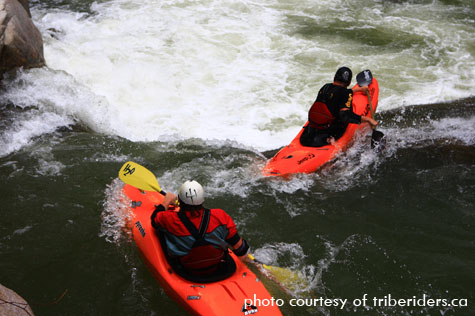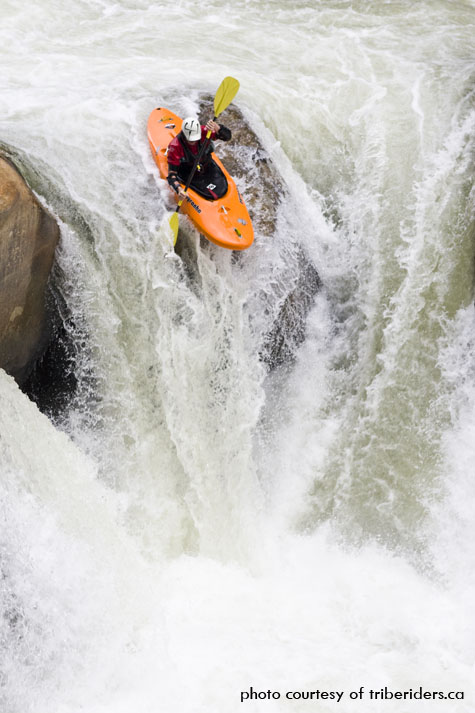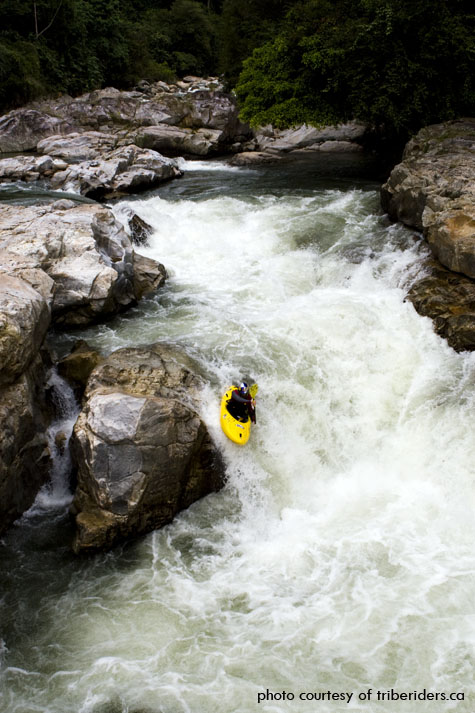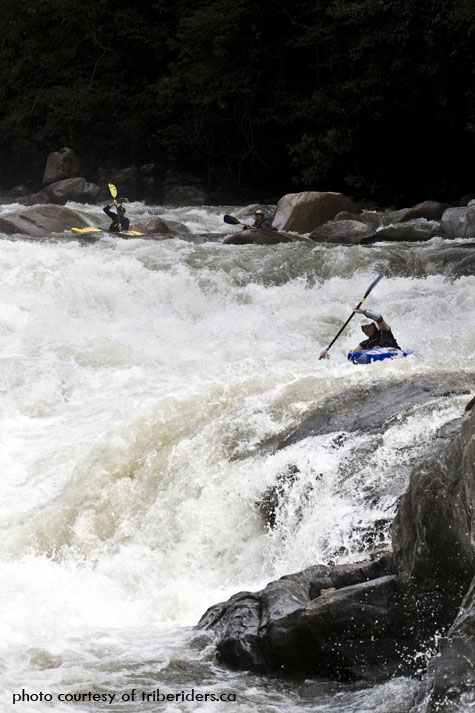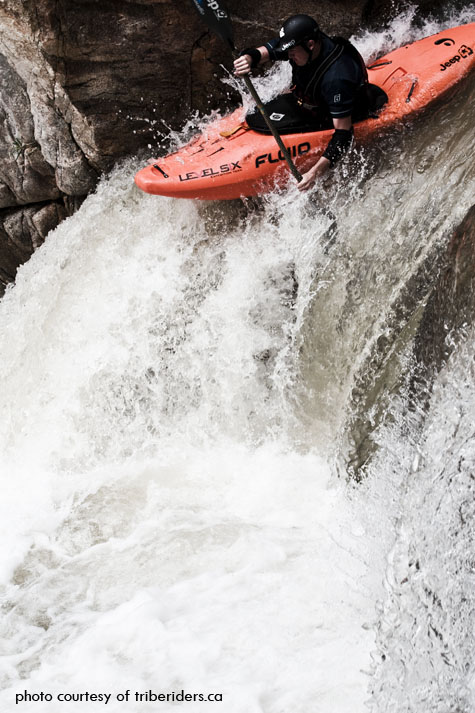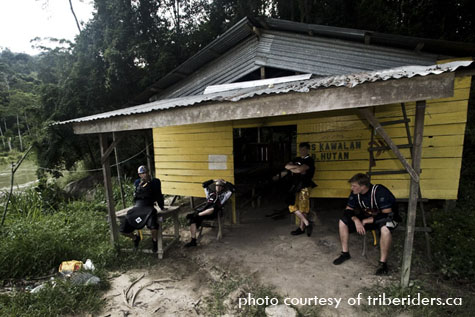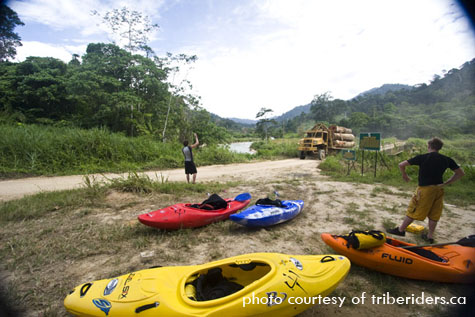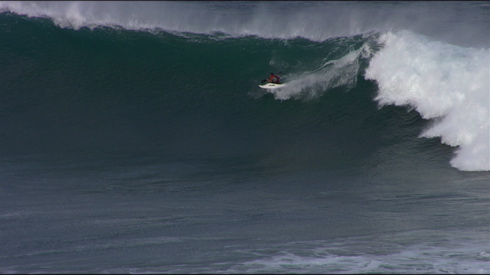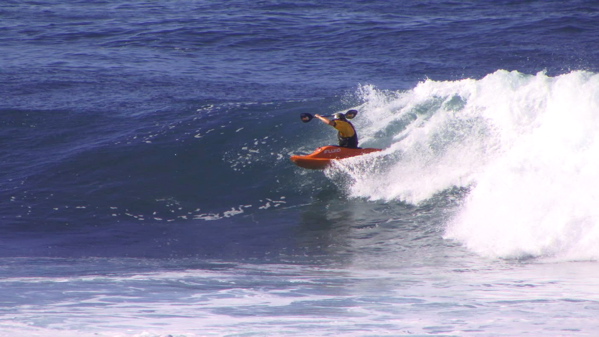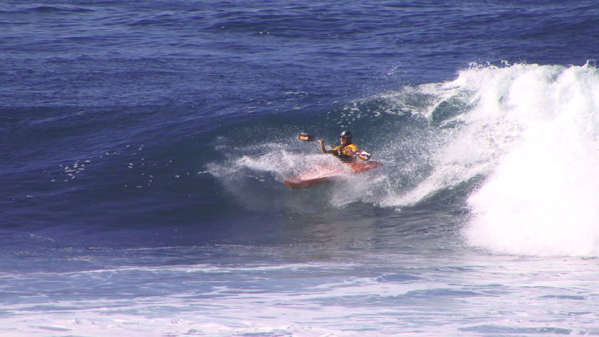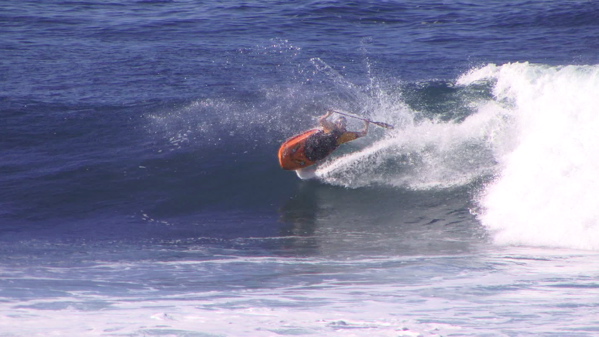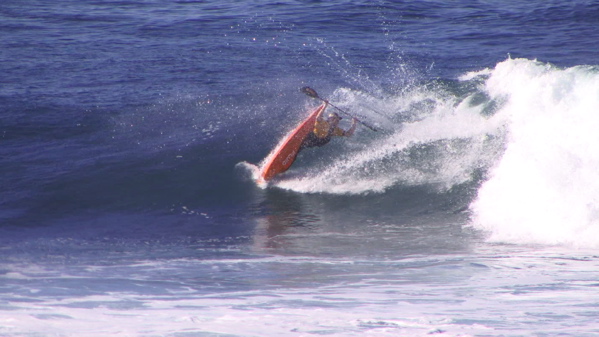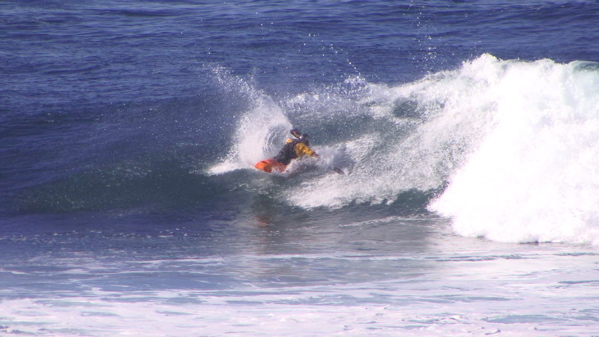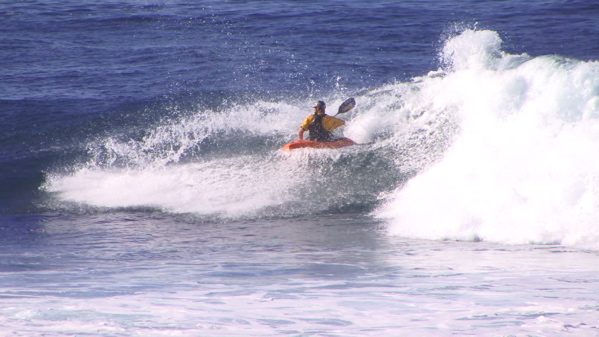Here is a little write up of a multiday I did on the Sungai Mangga river in Malaysia. I just want to say thanks to Pat Camblin and Benny Marr for letting me use these images, to check out some more go to triberiders.ca.
Let me start with the quick back story. Ben Marr, Pat Camblin and I had been in Malaysia for 3 weeks running rivers all over the country including a trip down the lower section of the Sungai Manga. Dave Nieuwenhuis and Nick Doran had just arrived and we decided to go back to the Sungai Manga and try drive much further upstream and do a multiday on a previously unpaddled section of the river.

The Sungai Mangga is located in the Perak province in the very northern part of Malaysia. The river runs through the Titiwangsa Mountains and the tropical Belum Rainforest before reaching Lake Banding. The forest covers an area over 200,000 hectares and is said to be over 130 million years old, making it older than the Amazon. It is home to Elephants, tigers, bears, “Sumatran” rhinoceros’, gibbons and more than 300 species of birds.
Despite most of the forest being protected, there are areas where commercial logging has been allowed. Our plan was to drive on these logging roads to a point about 30km upstream of where the river enters the lake. There had been a lot of rain in the area for a few days before we arrived, not only did this mean that the river was very full (twice the flow of your last run) but we soon realised that our rented double cab didn’t have the right tyres to make it up the steep and muddy logging roads. We came up with a plan B and decided to drive as far as possible with our vehicle, unload our gear and try hitch a ride on one of the logging vehicles heading upstream. Luck was on our side and we managed to organise a ride before we had even finished unloading our boats.

Hitching a ride
So with the 5 of us and our boats loaded onto the back of a Hilux we started heading upstream. During the first few kilometers we past sections of forest that were destroyed by the logging, with all the large trees having been cut and dozens of winding roads covering the hillsides.
These areas soon passed and we began slowly winding our way along the steep muddy forest roads with untouched forest as far as we could see and the river winding along the valley floor hundreds of meters below us.
After about 4 hours of driving the road bacame quite bad and we could see that it hadn’t been used in a long time. After a few more kilometers the road ended abruptly where a large section of it had collapsed and fallen down the hillside, we could go no further. It was mid afternoon and were still hundreds of metres of thick jungle between as and the river , it became obvious that we would need to set up camp here for the night and continue in the morning. We thanked our drivers for the lift and luckily managed to buy a panga from them when we realised ours was left in the vehicle during the rush.
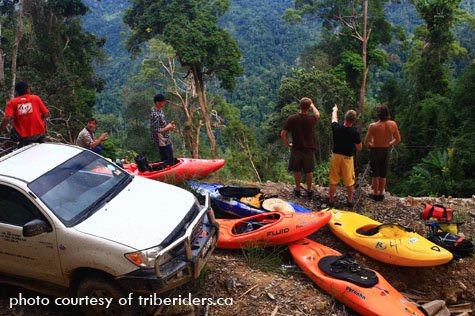
end of the road
As they drove away i think we all began to realise what we had gotten ourselves into, we would be on our own for the next 2 or 3 days in the middle of one of the worlds oldest rain forests, with hours of bush whacking and 30 kilometres of white water between us and our take out. After a few minutes of taking in where we were we all got to work, Dave and I started with a fire, Pat set up our tarp and Benny and Nick went to on a little scout of the landslide. As we cooked our supper and the light began to fade I was amazed as how jungle seemed to come alive with the constant buzz of insect and animal calls.
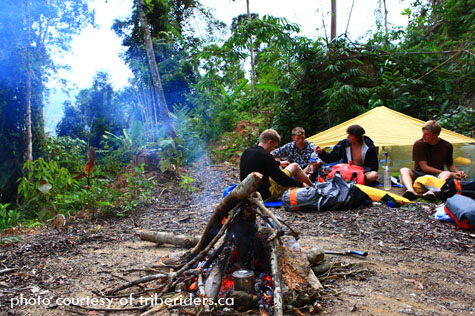
Camp day 1
Day 2 started with a quick breakfast after sun rise, we needed to get going early as we knew it could be a long day. We decided to lower our boats down the landslide as it was far easier than cutting through the jungle. This was slow muddy work and we spent the next two hours lowering and dragging our boats whilst trying to avoid slipping, dislodging rocks or letting the boats slide too far. The land slide went from muddy to rocky and eventually narrowed to an end where we were faced with a thick jungle wall. I certainly had a few moments where I was asking myself why I do stupid things like this.
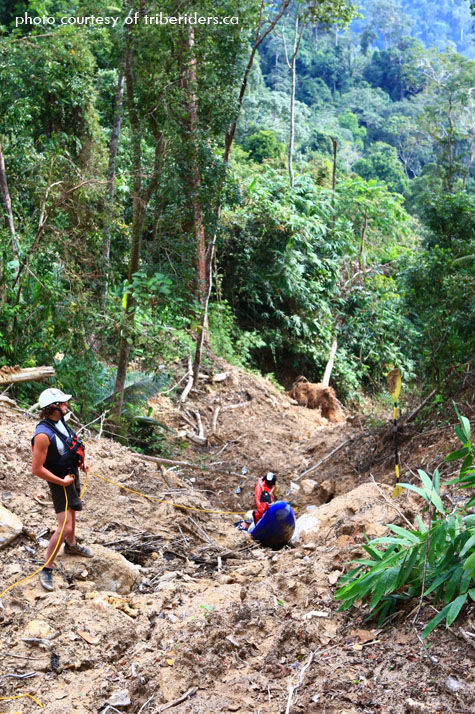
Start of the landslide

Getting down the landslide
Its surprisingly dark once you get under the canopy and the thick vegetation made moving forward just that much more difficult. Eventually we reached a little trickle of a stream which although not easy going was taking us in close to a straight line towards the river. 5 hours after we left camp we were finally at the river, with a few high fives and 15 minutes to repack our boats and get our gear on we were ready.
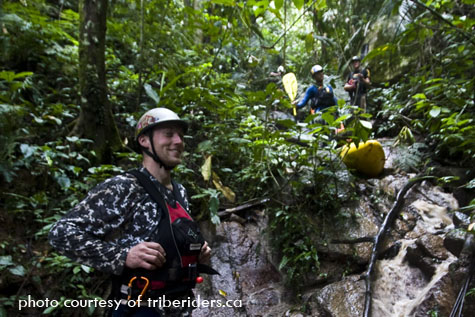
Dave in the jungle
The point were we had reached the river was almost half way down a rather nasty looking rapid that we decided to portage. We managed to find a way down to the opposite bank and after a quick scout realised the bottom section of the rapid was good to go, sweet! After our first little whitewater encounter and with everyone styling it we were all smiles as we headed downstream.
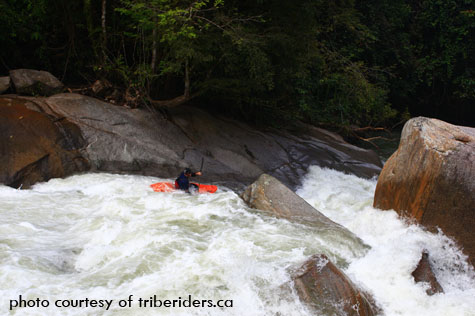
Me first rapid
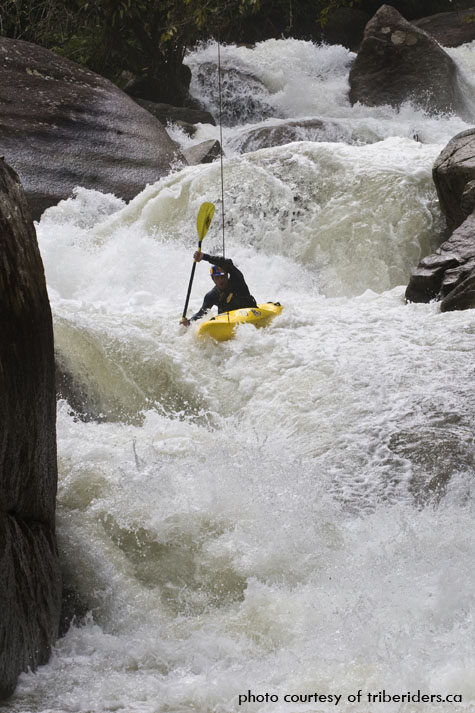
Pat first rapid
As we went on we had a few fun little rapids with one or two portages which helped us to get a feel for our loaded boats. One of the things that makes these sorts of trips so exciting is the fact that you don’t know what’s around the next corner or over the next horizon line and there is also something special about being in a place like this where only a few people have ever been. After a few kilometres of leapfrogging our way down some easy class 3 read and run sections we reached a small flat stretch where the river opened up a bit. We noticed some movement on the far bank and we start paddling over to see a group of 5 Asian elephants slowly making their way along the river bank. As quickly as hey had appeared they were gone, vanishing into the bush before we had a chance to get a good photo.

Elephant in the bush
After this encounter and in high sprits we set up camp on a perfect little sandy island. Everyone got to work collecting wood, setting up the shelter, getting the fire going and preparing food. The night was spent around the fire sipping at a small bottle of whiskey talking about the days events, the possibilities of what lay downstream and eating a mixture of noodles, nuts, tuna and baked beans.
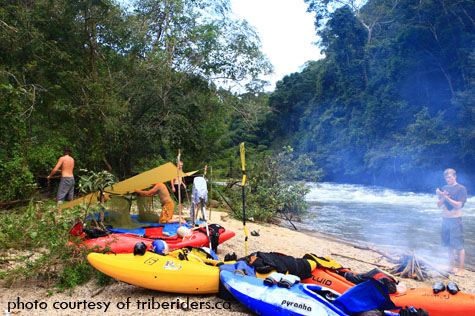
Camp day 2
Day three was one of anticipation, we knew from our GPS that we were not far from one or two large tributaries coming in just downstream. We were also getting starting to get close to the section we had run a few weeks before. The first few kilometres were not very different to the day before, with some more fun rapids but it wasn’t long before we passed some tributaries and the river became noticeably higher volume. After passing the last and the biggest tributary we quickly found ourselves in our biggest rapid of the run so far. We kept moving and found that the rapids were just getting better, after running 3 great class 4 rapids we got to the point that from where Pat, Ben and I had put in a few weeks earlier. Once we reached the next rapid we realised just how much more water there was from our last run. We scouted the rapid and although it had a line it wasn’t an easy one and the entire river was pushing straight into a large retentive hole at the bottom of the rapid.
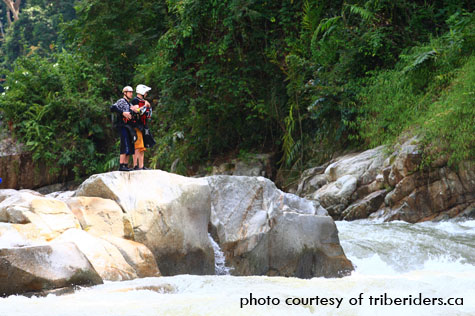
Nick scouting
After giving it a good look Dave, Pat and I decided we were going to walk it. Ben didn’t want to let this one get by and decided to give it a try. The rest of us set up safety and cameras. Ben charged in and just narrowly made his line making the boof off of a rock in the centre of the rapid and missing the hole at the bottom. He was stoked.
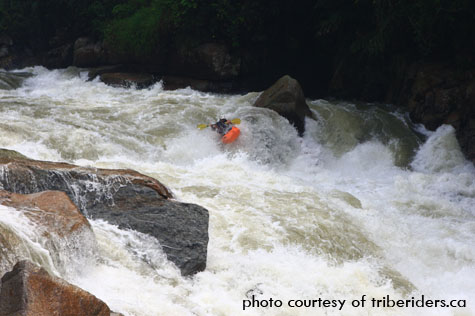
Benny on the big one
Nick seeing the successful run decides he’s going to give it a bash. We waited at the bottom. Nick charges in but miscalculates the power of the current a bit and ends up getting knocked off line missing the boof that Ben had hit on the previous run. Nick is quickly channelled straight into the centre of the hole at the bottom. He’s in there for a good 20 seconds with ends flying, trying to find a way out. He disappeared, seconds go by and then his paddle followed shortly by nick and his boat emerge 15 meters downstream of the hole. Dave threw a rope and Nick is pulled to the side while Ben went after his boat.
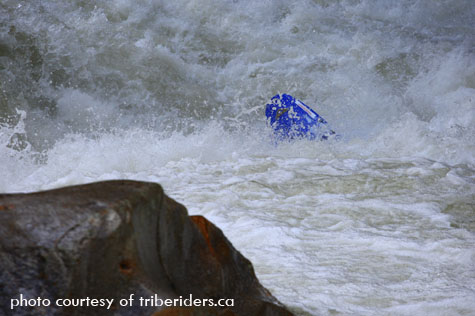
Nick mid beat down
Once we get the pieces back together we spend the next 4 hours running countless big water rapids, a few small waterfalls and an awesome canyon section. This ended up being some of the best white water of the trip and some of the best I have paddled anywhere.
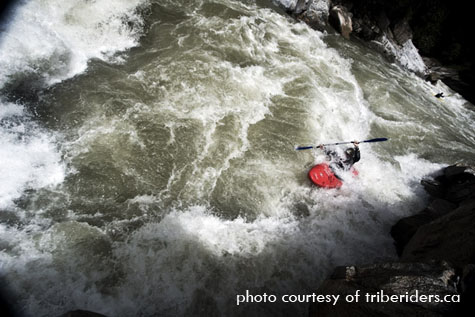
Dave getting it done
